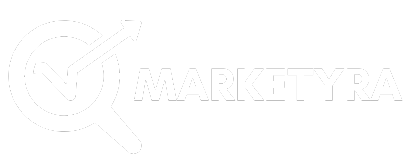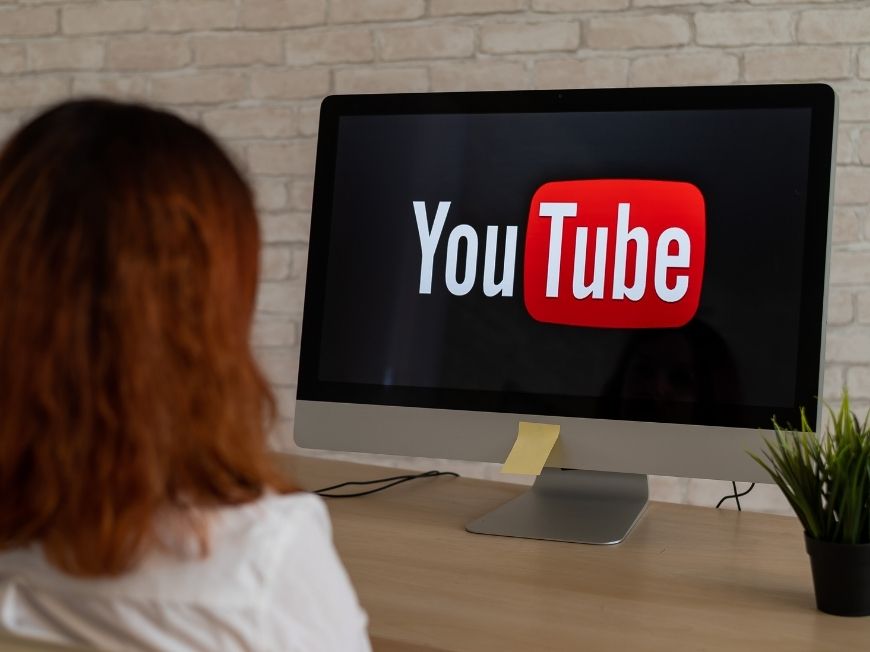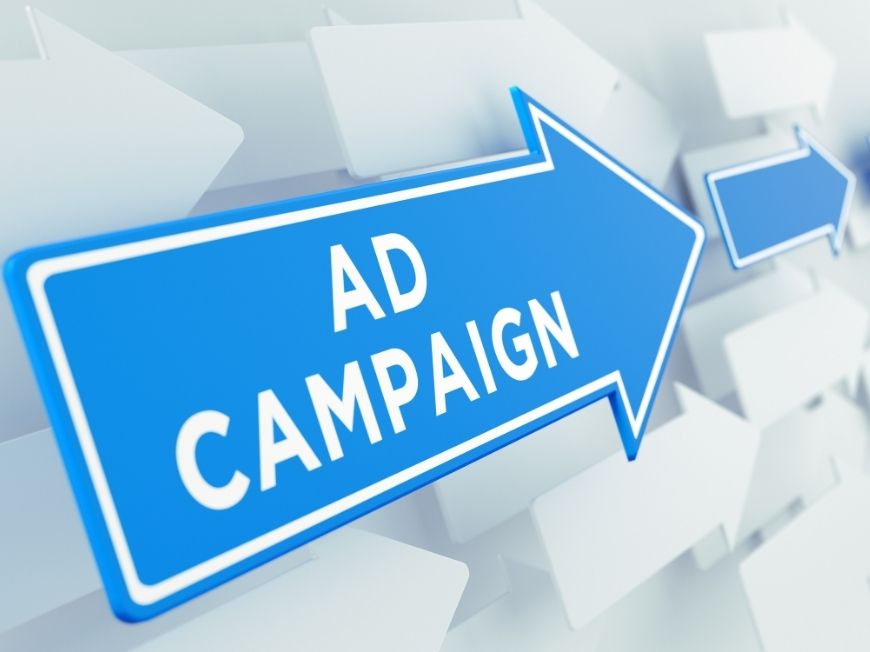On this page you will read detailed information about On Page SEO.
In the ever-evolving landscape of digital marketing, understanding On-Page SEO is crucial to enhancing your website’s visibility and performance. As you navigate this intricate domain, mastering the key elements and strategies of On-Page SEO becomes essential. This guide aims to equip you with a comprehensive understanding of how to optimize individual web pages to achieve higher search engine rankings and attract relevant traffic. From keyword optimization to content quality and technical considerations, each component plays a pivotal role in your online success. Embark on this journey to refine your SEO skills and elevate your digital presence.
Understanding What Is On Page SEO
The Essence of On Page SEO
At its core, on page SEO is a set of strategies aimed at optimizing individual web pages to improve their search rankings and attract organic traffic. Unlike off page SEO, which focuses on external signals such as backlinks, on page SEO hones in on elements within the website itself. By ensuring these elements are optimized, you can enhance your site’s visibility and relevance in search engine results.
Key Components of On Page SEO
Content Quality and Relevance
The foundation of successful on page SEO lies in producing high-quality, relevant content. This means crafting articles that are both informative and engaging, tailored to the interests and needs of your audience. Utilizing primary and secondary keywords naturally throughout your content is essential, as it helps search engines understand the context and focus of your page. However, it’s crucial to avoid keyword stuffing; instead, aim for a seamless integration that maintains readability.
Optimizing HTML Elements
Another vital aspect of on page SEO is the optimization of HTML elements. Title tags, meta descriptions, and header tags (H1, H2, H3) should be meticulously crafted to include target keywords while providing a clear summary of the page’s content. These elements not only aid search engines in indexing your site but also influence click-through rates by enticing users to visit your page.
Multimedia and User Experience
Incorporating multimedia elements such as images, videos, and infographics can significantly enhance the user experience, making your content more engaging and shareable. To maximize their impact, ensure that images are optimized with descriptive alt text and that multimedia files are properly compressed for fast loading times. Additionally, a responsive design that adapts to various devices is crucial for maintaining user engagement and satisfaction.
The Impact of On Page SEO
By implementing these strategies, you can boost your website’s search visibility, attract a more targeted audience, and ultimately improve your site’s performance. Understanding what is on page SEO and applying its principles is an ongoing process, but the rewards of increased traffic and engagement are well worth the effort.
Key Elements of On Page SEO
Title Tags and Meta Descriptions
Title tags and meta descriptions are foundational elements of on page SEO. The title tag serves as the headline for your webpage in search engine results, making it crucial for attracting clicks. It should be concise yet descriptive, typically not exceeding 60 characters. Including your primary keyword, such as “what is on page SEO,” within the title tag can significantly enhance your page’s visibility.
Meta descriptions, on the other hand, provide a brief summary of your page’s content. While not a direct ranking factor, well-crafted meta descriptions can improve your site’s click-through rate. Aim for around 150-160 characters and incorporate keywords naturally. An engaging meta description can entice users to click on your link, further boosting your page’s potential traffic.
Header Tags and Content Structure
The use of header tags (H1, H2, H3, etc.) helps organize your content, making it easier for search engines and users to comprehend. The H1 tag should encapsulate the main topic of the page, while subsequent header tags can divide the content into logical sections. This structure not only improves readability but also signals search engines about the hierarchy and relevance of topics discussed.
Moreover, content should be informative and engaging, incorporating relevant keywords seamlessly, such as “on page SEO.” Avoid keyword stuffing, as it can lead to penalties. Instead, focus on delivering value-driven content that answers users’ queries and keeps them engaged.
Internal Linking and URL Structure
Internal linking is vital for on page SEO as it aids in the navigation of your website and distributes link equity across different pages. By linking related content, you enhance the user experience and increase the time spent on your site. Ensure that anchor texts are descriptive and relevant to the linked page.
Additionally, maintaining a clean and descriptive URL structure is crucial. URLs should be concise and include relevant keywords, offering a clear path to the content it leads to. This not only assists with SEO but also improves user trust and click-through rates.
The Importance of High-Quality Content in On Page SEO
Crafting Content that Resonates
In the realm of on page SEO, the quality of your content serves as the cornerstone of your strategy. High-quality content does more than just fill a page; it resonates with your audience, encourages engagement, and builds trust. Content that resonates is tailored to meet the needs of your target audience by addressing their questions, solving their problems, and engaging them in meaningful ways. By understanding what your audience is searching for, and delivering it in a clear, concise, and engaging manner, you not only captivate readers but also send positive signals to search engines, boosting your page’s visibility and relevance.
Enhancing Content for Search Engines
Creating high-quality content is not solely about engaging readers; it also involves optimizing it to attract search engines. This is where the intricacies of on page SEO come into play. Well-crafted content should seamlessly integrate SEO keywords, such as “what is on page SEO” and “on page SEO,” without disrupting the flow of information. This strategic placement aids search engines in understanding the context and relevance of your content, thereby improving your site’s ranking. Employing semantic keywords and related phrases also enriches your content, making it more comprehensive and aligned with the diverse search queries of your audience.
Building Authority and Engagement
High-quality content establishes authority in your niche, which is crucial for long-term SEO success. When your content is informative, accurate, and provides value, it naturally attracts backlinks from other reputable sites. These backlinks act as endorsements, enhancing your site’s authority in the eyes of search engines. Additionally, engaging content encourages readers to spend more time on your page, reducing bounce rates and increasing dwell time—both significant factors in search engine algorithms. By maintaining a consistent publishing schedule with high-quality content, you not only improve your on page SEO but also cultivate a loyal audience who trusts your expertise and seeks out your insights.
Optimizing Meta Tags for On Page SEO Success
Understanding Meta Tags
Meta tags serve as snippets of code embedded in a website’s HTML, providing crucial information about a page’s content to search engines and visitors. These tags play an integral role in on page SEO by influencing how search engines perceive and rank your content. By optimizing meta tags effectively, you can enhance your site’s visibility and click-through rates.
Crafting Compelling Title Tags
Title tags, often appearing as clickable headlines on search engine results pages (SERPs), are pivotal in capturing user interest. A well-crafted title tag should succinctly encapsulate the page’s content while incorporating the primary keyword. For instance, including “what is on page SEO” directly in your title tag can significantly boost relevance. Aim for a title length between 50 and 60 characters to ensure complete visibility on SERPs.
Enhancing Meta Descriptions
Meta descriptions provide a brief summary of a page’s content beneath the title tag in search results. While they don’t directly impact rankings, compelling meta descriptions can influence click-through rates. A well-optimized meta description should be concise, typically under 160 characters, and include the keyword “on page SEO” to resonate with search intent. Employ active language and a clear value proposition to entice users to click through to your site.
Utilizing Header Tags for Structure
Header tags, ranging from H1 to H6, organize content into a hierarchical structure, aiding both user readability and search engine understanding. The H1 tag should mirror the title tag, incorporating essential keywords like “what is on page SEO” to reinforce relevance. Subsequent headers should segment content logically, utilizing related phrases and synonyms to maintain semantic coherence.
By optimizing meta tags with precision and intent, you not only enhance the on page SEO of your website but also create a compelling and informative experience for your audience. This strategic approach ensures your content stands out, driving both traffic and engagement.
Role of Header Tags and Keywords in On Page SEO
Understanding Header Tags
In the realm of on page SEO, header tags play a pivotal role in structuring content. These HTML elements, denoted by H1 to H6 tags, organize and prioritize information on a webpage, making it easier for search engines to understand the hierarchy of your content. The H1 tag, often reserved for the main title, signals the primary subject of the page. Subsequent tags like H2 and H3 introduce subtopics, guiding both readers and search engines through a logical flow of information.
Properly utilizing header tags enhances user experience by creating a skimmable structure. This clarity not only aids human readers but also improves the way search engines like Google assess and rank your content. A well-structured page is more likely to appear in search results, drawing in more traffic and engagement.
Importance of Keywords
Keywords are the backbone of on page SEO, acting as the bridge between user queries and your website’s content. They help search engines comprehend the subject matter of your page and determine its relevance to specific queries. Strategically placing keywords within header tags, meta descriptions, and throughout the body content signals to search engines the core focus of your page.
However, the art of keyword integration extends beyond mere repetition. It’s crucial to use them naturally and contextually, ensuring they fit seamlessly into the narrative. Keyword stuffing, where keywords are overused, can lead to penalties, diminishing your page’s visibility. Instead, aim for a balanced approach, using synonymous phrases and variations to enrich content and satisfy search intent.
Combining Header Tags and Keywords
The synergy between header tags and keywords is essential for optimizing on page SEO. By embedding relevant keywords within header tags, you highlight the primary topics and subtopics of your content. This practice not only aids in ranking for specific terms but also establishes a clearly defined content structure. Ultimately, a robust strategy that intertwines effective header tagging with thoughtful keyword placement is indispensable for enhancing your page’s search engine performance and ensuring it stands out in the vast digital landscape.
Improving On Page SEO with Internal Linking Strategies
Understanding Internal Linking
Internal linking is a crucial aspect of on page SEO, directly impacting how search engines and users navigate your website. By strategically connecting your web pages, you improve the site’s architecture and distribute page authority and ranking power across your site. This practice not only enhances SEO but also boosts user engagement and retention by guiding visitors to related content.
Benefits of a Robust Internal Linking Structure
A well-planned internal linking strategy offers several advantages. Firstly, it enhances crawl efficiency; search engines use these links to discover and index new pages. Secondly, it helps in distributing link equity throughout the site, ensuring that all pages benefit from any inbound links your site receives. Lastly, it improves user experience by providing a logical pathway for users to follow, potentially increasing time spent on your site and reducing bounce rates.
Best Practices for Effective Internal Linking
To maximize the impact of internal linking on on page SEO, consider the following best practices:
- Use Descriptive Anchor Text: Ensure the link text is relevant and descriptive. This helps both users and search engines understand the context of the linked page.
- Link Deep, Not Broad: Instead of linking to your homepage or contact page repeatedly, focus on deep linking to content-rich pages, which can drive traffic to otherwise overlooked content.
- Maintain a Reasonable Number of Links: While internal links are beneficial, overloading pages with links can dilute their effectiveness. Aim for a balance that maintains clarity and focus.
- Regularly Audit and Update Links: Websites evolve, and so should your internal linking strategy. Regular audits will help you identify and fix broken links or outdated content.
Implementing these strategies can significantly enhance what is on page SEO efforts, ensuring that your website is both search engine friendly and user-centric. By optimizing your internal linking structure, you not only improve your site’s SEO performance but also contribute to a smoother, more intuitive user journey.
In the previous post, we had shared information about What Is SEO? Exploring the Basics of Digital Marketing, so read that post also.
Enhancing User Experience for Better On Page SEO
Prioritizing Page Speed and Performance
In the realm of on page SEO, the speed at which your website loads is a critical factor that greatly influences user experience. A fast-loading site not only keeps visitors engaged but also helps improve your search engine rankings. To optimize load times, consider compressing images, leveraging browser caching, and minifying CSS and JavaScript files. These measures reduce the data that needs to be loaded, ensuring a smoother, quicker browsing experience for users. Remember, even a one-second delay in page response can cause a significant drop in conversions.
Creating Intuitive Navigation
When visitors land on your site, they should be able to find what they’re looking for without any hassle. An intuitive, well-structured navigation system facilitates this process, enhancing the user experience and supporting your on page SEO efforts. Use clear, descriptive labels for your navigation links and organize them logically to guide visitors through your content seamlessly. Implementing breadcrumbs can further aid navigation, allowing users to track their journey and move between sections with ease. A user-friendly site structure not only retains visitors but also encourages search engines to crawl and index your pages more effectively.
Ensuring Mobile Responsiveness
With the increasing use of mobile devices to access the internet, ensuring your site is mobile-responsive is essential for effective on page SEO. A responsive design allows your website to adapt to various screen sizes, ensuring a consistent and accessible user experience across all devices. Google’s mobile-first indexing means that the mobile version of your site is prioritized in search rankings. Hence, optimizing your site for mobile users can significantly impact your visibility and traffic. Evaluate your site’s mobile performance regularly using tools like Google’s Mobile-Friendly Test to identify and rectify any issues promptly.
Crafting Quality Content
Content is at the heart of on page SEO and user engagement. Delivering high-quality, relevant, and informative content not only addresses your audience’s needs but also enhances dwell time on your site. Employ a mix of text, images, and videos to cater to diverse preferences and keep your content fresh and engaging. Using clear headers, bullet points, and short paragraphs improves readability, making it easier for users to digest information. Furthermore, incorporating the SEO keywords, such as “what is on page SEO” and “on page SEO,” strategically within your content boosts your site’s relevance and searchability.
By focusing on these aspects, you can significantly enhance user experience while simultaneously strengthening your on page SEO strategy.
On Page SEO Checklist: A Step-by-Step Guide
Identify Relevant Keywords
To embark on an effective on-page SEO journey, begin by identifying the most relevant and impactful keywords for your content. This involves conducting comprehensive keyword research using tools like Google Keyword Planner or SEMrush. Aim for a blend of high-volume, competitive terms and long-tail keywords that cater to specific search intents. Integrating these terms thoughtfully within your content ensures that you capture a wide spectrum of search queries, increasing the likelihood of attracting your target audience.
Optimize Title Tags and Meta Descriptions
Title tags and meta descriptions are pivotal elements in on-page SEO, serving as the first point of contact between your content and potential readers. Craft compelling and concise titles that incorporate your primary keyword, encouraging higher click-through rates. Similarly, your meta descriptions should be engaging and informative, offering a succinct summary of what readers can expect. Both components should be crafted with the user’s search intent in mind, as this alignment can significantly boost your page’s visibility in search engine results.
Structure Content with Headers and Subheaders
A well-structured page enhances readability and helps search engines understand your content’s hierarchy. Implementing headers (H1, H2, H3) and subheaders strategically not only breaks down the text for easier reading but also allows for the inclusion of secondary keywords. This structure benefits both human readers and search engine algorithms, as it signals the key topics and subtopics covered within the page. Ensure that each header is descriptive yet succinct, providing clear guidance on what the following section contains.
Enhance Content Quality
The cornerstone of any successful on-page SEO strategy is high-quality, valuable content. Prioritize originality and relevance, ensuring that your content answers the queries and concerns of your audience. Use diverse media such as images, videos, and infographics to enrich the content and maintain reader engagement. Remember, content that is insightful and comprehensive is more likely to be shared, linked to, and favored by search engines, ultimately boosting your page’s authority and search rankings.
Implement Internal Linking
Internal linking is an often-overlooked yet powerful on-page SEO tactic. By linking to other relevant pages within your website, you guide users through a journey, enhancing their overall experience and encouraging longer site visits. This practice not only aids in distributing page authority across your site but also helps search engines understand the relationship between different pages. Aim to incorporate natural, context-appropriate links within your content, ensuring they add value to the reader’s understanding and navigation.
By following this on-page SEO checklist, you position your website to better meet the demands of both users and search engines, ultimately driving more traffic and achieving higher rankings.
What Is On Page SEO? FAQs and Common Misconceptions
Common Questions About On Page SEO
Understanding what on page SEO entails often begins with clarifying its fundamental role and purpose. On page SEO involves optimizing individual web pages to improve their visibility on search engines, ensuring they are both accessible and relevant to users. But what exactly does this mean for your website?
- Is on page SEO necessary for every website? Absolutely. Regardless of your industry or audience, on page SEO is critical to ensuring your content reaches the right people. By optimizing elements like meta tags, headers, and images, you enhance the user experience and increase your chances of ranking higher on search engine results pages (SERPs).
- How does on page SEO differ from off-page SEO? On page SEO focuses on optimizing elements within your website, such as content and HTML source code. Conversely, off-page SEO involves external factors like backlinks and social signals. Both are essential, but on page SEO is the foundational step that ensures your website is effectively indexed and ranked by search engines.
Dispelling On Page SEO Misconceptions
In the realm of search engine optimization, misconceptions can cloud understanding and hinder effective implementation. Here are a few myths debunked:
- Myth: Stuffing keywords is beneficial. Once a popular tactic, keyword stuffing is now frowned upon by search engines. It can lead to penalties and diminish the user experience. Instead, focus on naturally incorporating relevant keywords, like “what is on page SEO” and “on page SEO,” to maintain content quality and relevance.
- Myth: On page SEO is a one-time task. SEO is an ongoing process. As search algorithms evolve, so too should your on page strategies. Regularly updating your content and technical elements keeps your site optimized and competitive.
By understanding these FAQs and dispelling common myths, you’ll be better equipped to implement effective on page SEO strategies, enhancing both your site’s visibility and user engagement.
Conclusion
In mastering on-page SEO, you unlock the potential to elevate your website’s visibility and effectiveness in search engine results. By meticulously optimizing key elements such as content quality, keyword usage, and technical aspects, you ensure a seamless experience for both users and search engines. Employing a comprehensive checklist enables you to consistently refine and enhance your strategy, adapting to the ever-evolving digital landscape. As you continue to prioritize these foundational strategies, you not only improve your search rankings but also foster a robust online presence that resonates with your audience and drives sustainable growth.
Disclaimer
The content published on the Marketyra blog is for educational and informational purposes only. While we strive to share accurate and up-to-date digital marketing tips, strategies, and trends, we do not guarantee any specific results. Readers are advised to use their own judgment before applying any tips or advice provided. Marketyra is not liable for any losses, damages, or issues arising from the use of blog content.
So friends, today we talked about On Page SEO, hope you liked our post.
If you liked the information about On Page SEO, then definitely share this article with your friends.
👉 Need help with SEO or digital marketing services?
Feel free to call us at 📞 +91-9306925861, email us at 📧 admin@marketyra.com to get in touch!






